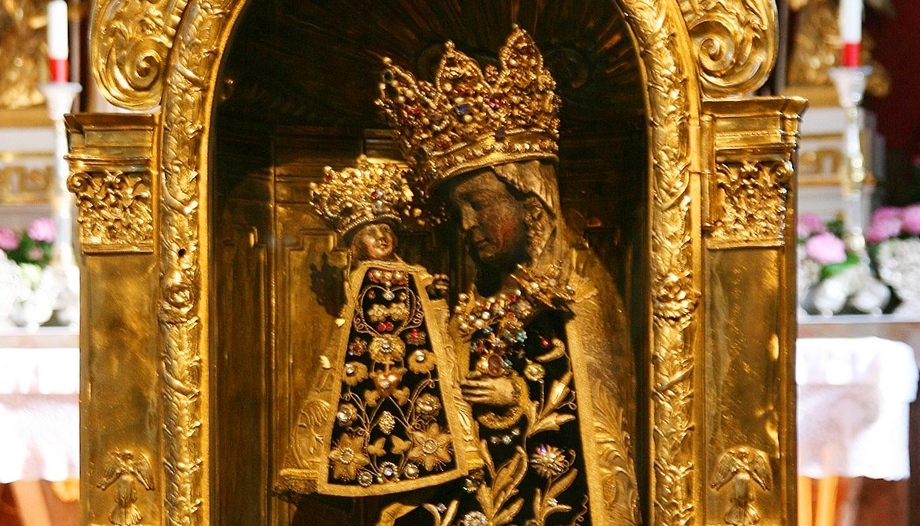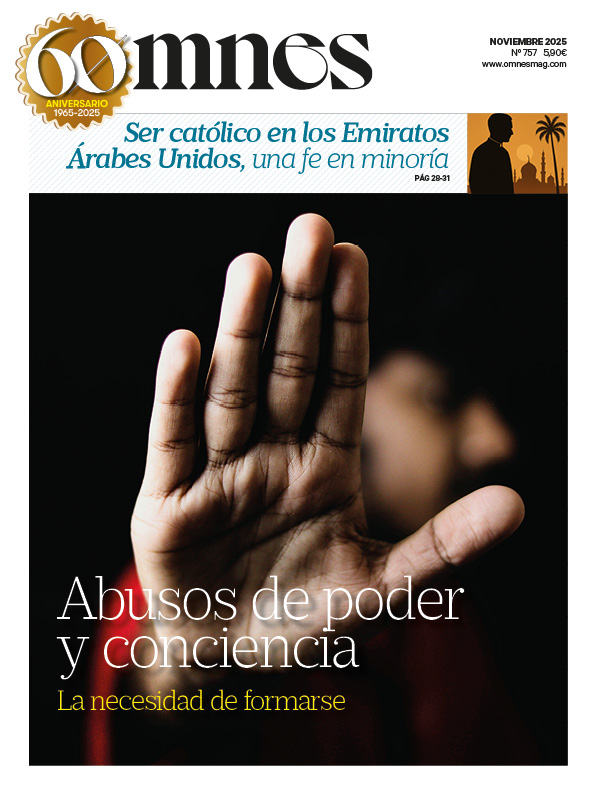Unlike other countries, which have a recognized national shrine, such as Guadalupe, El Pilar or Aparecida, there is no national pilgrimage site in Germany. If anything, Altötting, the country's main pilgrimage site and the "national" shrine of Bavaria. The figure of the black Madonna made of linden wood has been the object of pilgrimage since the 14th century. Today, more than one million people continue to make the pilgrimage to Altötting each year.
Altötting
Its history dates back to the year 700, when a baptistery was built on the site. According to tradition, Rupert of Salzburg brought a first image of the Virgin Mary to Altötting. Charlemagne's successors in the 9th century built a monastery and a basilica, which were destroyed in the Hungarian attacks. After two miraculous healings in the 14th century, the influx of pilgrims exceeded the dimensions of the small Chapel of Mercy, leading to the construction of a Gothic abbey church in the 15th century. Today, Chapel Square includes the original chapel, the abbey, the baroque church of St. Madeleine, the Congregation of Marian Men and the Rector's offices.
In addition to emperors, kings and nobles, Pope John Paul II prayed here in 1980. In 2006, Benedict XVI made a pilgrimage to Altötting and placed the episcopal ring he had worn until his election as Pope before the statue. Nevertheless, Altötting is a shrine for the common people, as a Bavarian proverb says: "From the door of every house there is a path to Altötting".
The miraculous Virgin of Neviges
In the Rhineland, the other mainly Catholic region of Germany, there are numerous Marian shrines such as the Black Madonna ("Schwarze Muttergottes") in the Kupfergasse, in the heart of Cologne, or the shrine of Neviges, also in the diocese of Cologne. The latter has been a place of pilgrimage since 1681 and has the particularity that the object of the pilgrimage, the "Miraculous Virgin of Neviges", is a page taken from a prayer book, with an engraving of the Immaculate Conception; the book was first published in 1660;
The picture is from the 1664 edition, in which the image was on page 254. At the beginning of the 20th century it was known as the "German Lourdes" because of the large number of pilgrimages. The construction of the present modern church took place between 1966 and 1968, designed by the architect Gottfried Böhm. Cardinal Karol Wojtyła visited Neviges together with other German and Polish bishops on September 23, 1978, 23 days before his election as John Paul II.
Kevelaer
However, the best known Marian shrine in this region is Kevelaer in the diocese of Münster. John Paul II also visited this place in 1987, accompanied by Cardinal Joseph Ratzinger and Mother Teresa of Calcutta, on the occasion of the World Marian Congress. Its origin dates back to Christmas 1641, when the merchant Hendrick Busman heard a mysterious voice while praying at a cross, saying: "You will build me a chapel on this spot! A few months later, his wife Mechel Schrouse had an apparition: in a great shining light she saw a holy house with a small image of the Blessed Virgin Mary "Consolatrix Afflictorum" from Luxembourg, which two soldiers had offered for sale to her some time before. Hendrick Busman's experience was thus confirmed and he asked his wife to locate the two soldiers and buy the pictures. She managed to buy one of them. The merchant built the chapel and, on June 1, 1642, the parish priest Johannes Schink of Kevelaer solemnly placed the image. Since the diocesan approval in 1647, the pilgrimages began and also the stories of miraculous healings, which continued until the middle of the 19th century. Today, the shrine receives about 800,000 pilgrims a year.
Eichsfeld
In addition to these "classical" shrines, and several dozen pilgrimage sites of regional scope, two shrines located in the territory of the former GDR have recently gained popularity.
On September 23, 2011, during his last trip to Germany as Pope, Benedict XVI visited the Marian shrine of Etzelsbach, within the Thuringian region of Eichsfeld, a sort of "Catholic island" that, as Benedict recalled, had resisted "two impious dictatorships that tried to uproot the traditional faith." In the Etzelsbach shrine, "the people of Eichsfeld were convinced that they found here an open door and a place of inner peace," Benedict XVI continued.
The first chapel in Etzelsbach, now belonging to the diocese of Erfurt, was probably built in the 15th century. In 1525, due to the Peasants' War, the pilgrimage was interrupted and was not resumed until the year of the Eichsfeld plague of 1555, albeit using a portable altar, as the chapel was still very dilapidated. It was not until 1801 that a new chapel was built on the site of the old one. However, as the pilgrimage was very popular and the chapel could not accommodate the flow of pilgrims, in 1898 the church that still exists today was built and consecrated according to the plans of the Franciscan Paschalis Gratze.
A special feature is the annual "pilgrimage on horseback", which takes place on the second Sunday after the Visitation of the Virgin Mary, and attracts many pilgrims; after the High Mass of the pilgrimage the horses are blessed. In addition, three traditional pilgrimages are held in August and September (Virgen de las Nieves, the Assumption and the Nativity of the Virgin Mary).
Neuzelle
The other sanctuary, in the former GDR, is Neuzelle, not far from the mouth of the Neisse River on the Oder, which forms the German-Polish border. There, in September 2018, a Priory was established under the Cistercian Abbey of Heiligenkreuz (Holy Cross) in Austria, after 200 years since the Cistercians, in 1817, had to leave Neuzelle, the only male monastery in this region that had survived the Protestant Reformation.
The image of Our Lady of Neuzelle reflects the history of this sanctuary: it is a Gothic image, to which in the Baroque period - the church, after the damages suffered during the Thirty Years' War (1618-1648), was restored in the Baroque style typical of southern Germany, something rare in these latitudes - a mantle was added and placed in the center of the altarpiece. Neuzelle is the official pilgrimage site of the diocese of Görlitz, the smallest in Germany, which has a Catholic population of only four percent.








